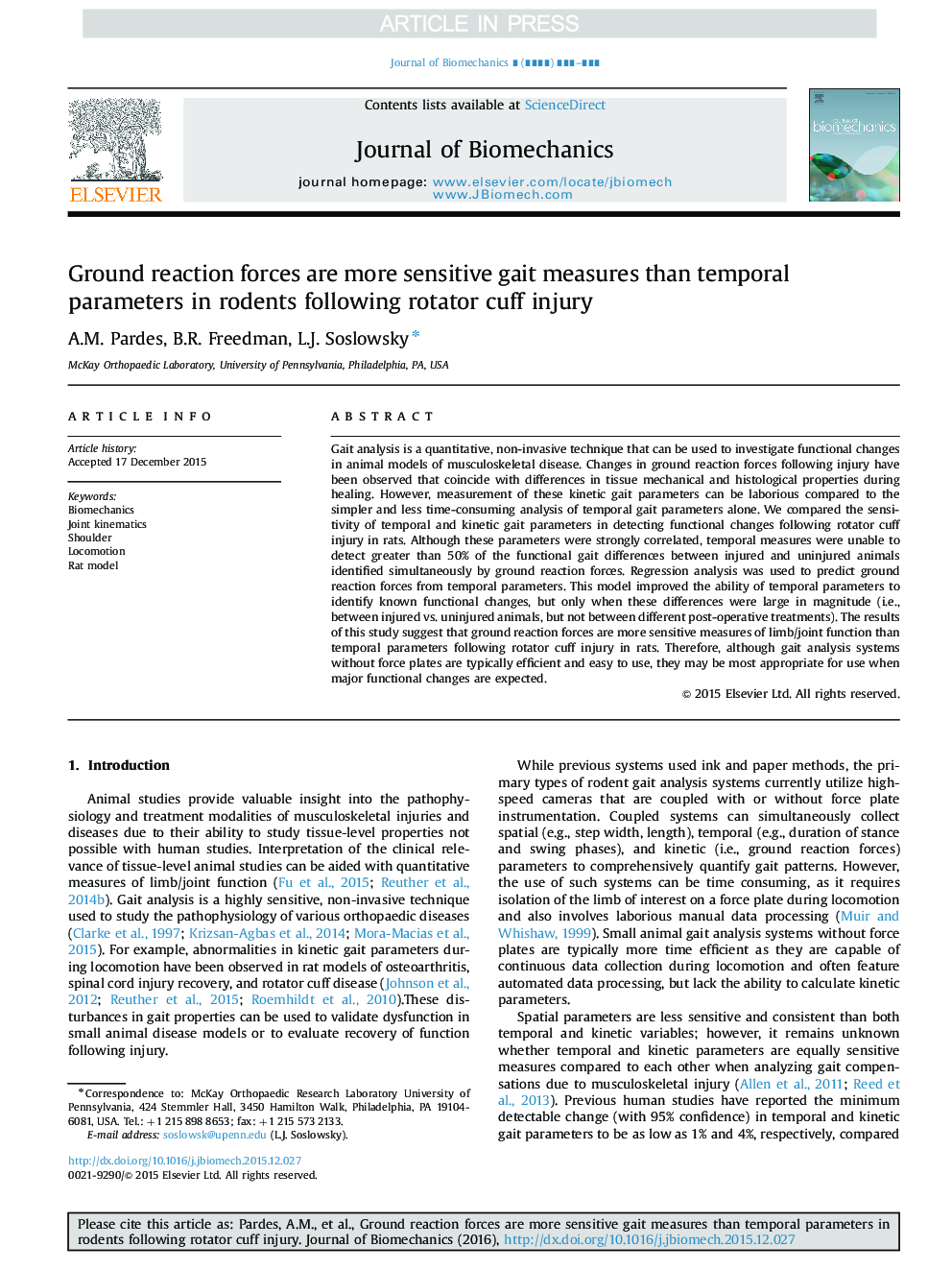| Article ID | Journal | Published Year | Pages | File Type |
|---|---|---|---|---|
| 10431135 | Journal of Biomechanics | 2016 | 6 Pages |
Abstract
Gait analysis is a quantitative, non-invasive technique that can be used to investigate functional changes in animal models of musculoskeletal disease. Changes in ground reaction forces following injury have been observed that coincide with differences in tissue mechanical and histological properties during healing. However, measurement of these kinetic gait parameters can be laborious compared to the simpler and less time-consuming analysis of temporal gait parameters alone. We compared the sensitivity of temporal and kinetic gait parameters in detecting functional changes following rotator cuff injury in rats. Although these parameters were strongly correlated, temporal measures were unable to detect greater than 50% of the functional gait differences between injured and uninjured animals identified simultaneously by ground reaction forces. Regression analysis was used to predict ground reaction forces from temporal parameters. This model improved the ability of temporal parameters to identify known functional changes, but only when these differences were large in magnitude (i.e., between injured vs. uninjured animals, but not between different post-operative treatments). The results of this study suggest that ground reaction forces are more sensitive measures of limb/joint function than temporal parameters following rotator cuff injury in rats. Therefore, although gait analysis systems without force plates are typically efficient and easy to use, they may be most appropriate for use when major functional changes are expected.
Related Topics
Physical Sciences and Engineering
Engineering
Biomedical Engineering
Authors
A.M. Pardes, B.R. Freedman, L.J. Soslowsky,
